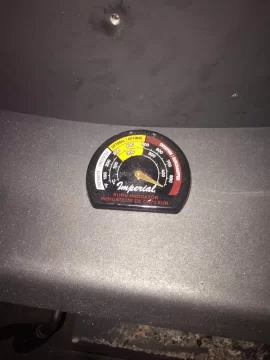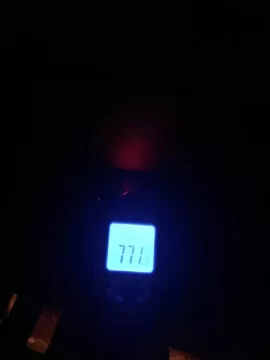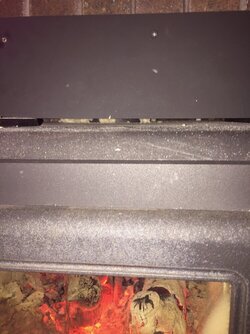Hello all. Searched the forum and got some great info germane to my situation but not entirely. Last year installed a True North TN19 in a recessed chimney, and had sweep put in a an insulated liner. Big run of 30 ft. Only burnt for a week or so so I did not have any thermometer on the stove top. Found on very quickly that we were losing a ton of heat up the chimney void as there was no block off plate installed. Because of the way the stove is recessed a traditional block off plate was not really possible. Wanting to help secure more heat but not risk overheating, I had a stainless steel box fabricated that surrounds the stove and slides in around the pipe. I then stuffed roxul between the box and the chimney and into the void as best I could. Threw a magnetic stove pipe thermometer on the stove top and started burning. Since then we’ve had a few fires where I’ve loaded it full (and not with a hot stove as I knew that was a no no,) and the thermometer has maxed out at 850*! It seems like with the damper completely closed the stove will simply still burn with too much air, and this coupled with the secondaries makes it get way hot. Can be burned with smaller loads at 5-600 on stove top thermometer. However I also invested in an infrared gun which reads about 80-100* cooler than the magnetic thermometer. What do you folks think is the issue here, if at all. At no point has either the stove top or flue collar glowed red, And aside from paint curing I haven’t really smelled hot metal. Any recommendations for reducing the draft on the stove? I don’t really know where the secondary air comes in? If need be I could pull the insulation out. Does the fire in this post seem way to rapid for the damper completely shut down?






